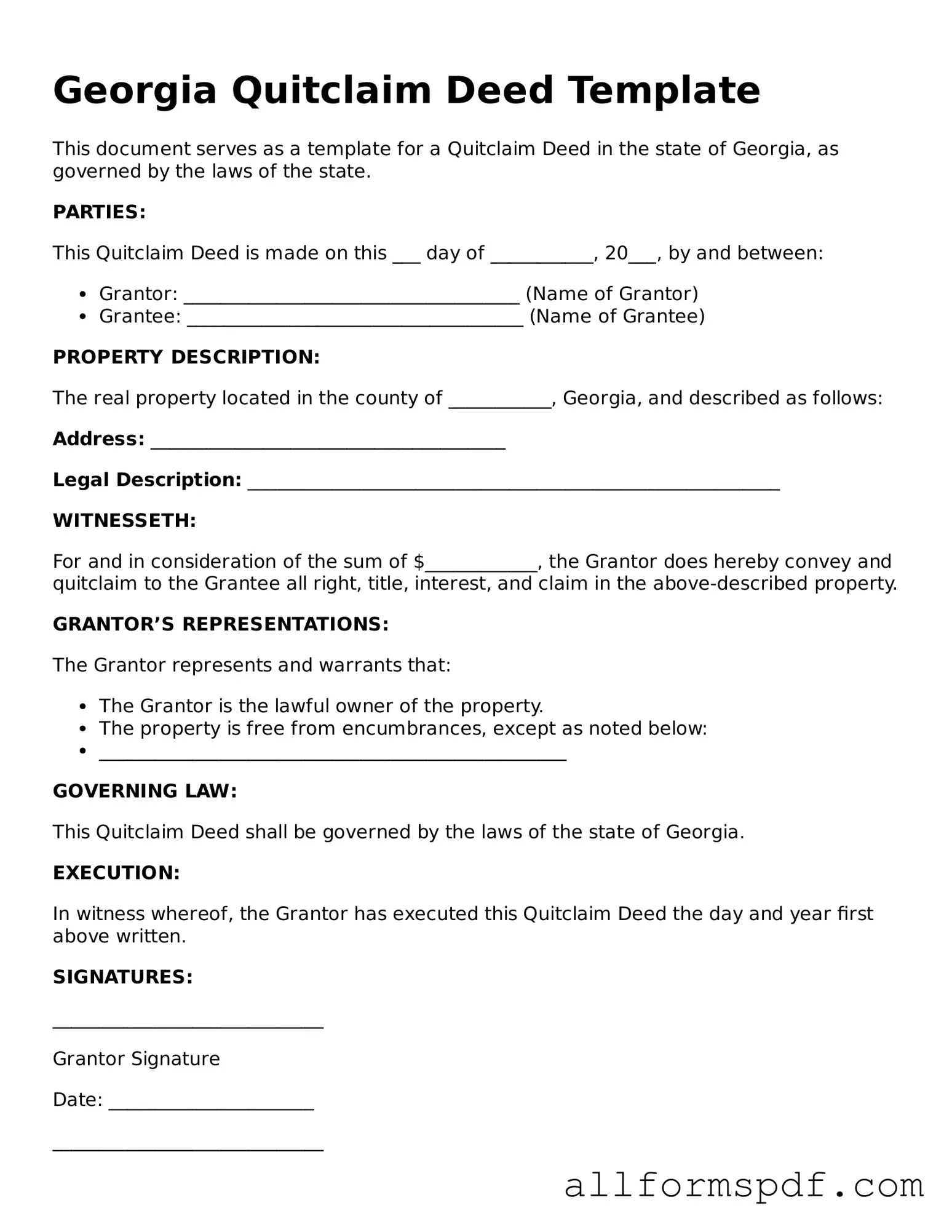Georgia Quitclaim Deed - Usage Guidelines
Once you have the Georgia Quitclaim Deed form in hand, it’s time to fill it out accurately. Completing this form correctly is essential for the transfer of property rights. Follow these steps to ensure you provide all necessary information.
- Obtain the Form: Download the Georgia Quitclaim Deed form from a reliable source or visit your local county clerk’s office to get a physical copy.
- Identify the Grantor: Fill in the name of the person transferring the property. This is the current owner of the property.
- Identify the Grantee: Enter the name of the person receiving the property. This is the new owner.
- Provide Property Description: Write a clear and accurate description of the property. Include the address and any legal descriptions if available.
- Include Consideration: State the amount of money or value exchanged for the property, even if it is nominal.
- Sign the Form: The grantor must sign the deed in the presence of a notary public.
- Notarization: Have the signature notarized. This step is crucial for the deed to be legally binding.
- Record the Deed: Submit the completed and notarized Quitclaim Deed to the county clerk’s office where the property is located for recording.
After completing these steps, the Quitclaim Deed will be officially recorded, and the transfer of property rights will be recognized by the state. Keep a copy for your records.
